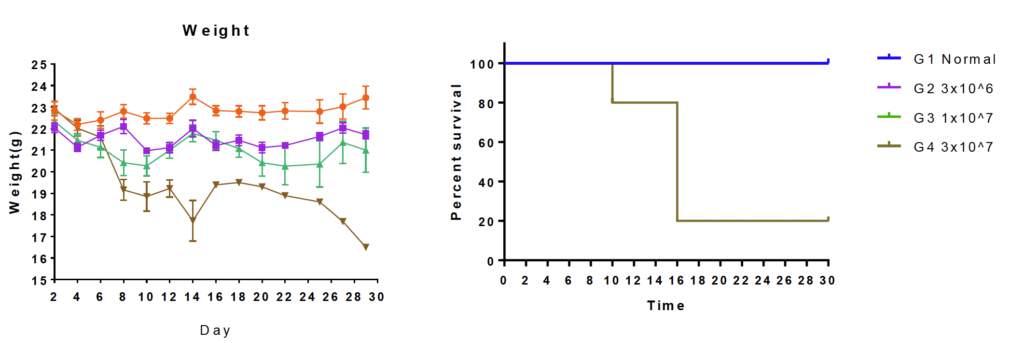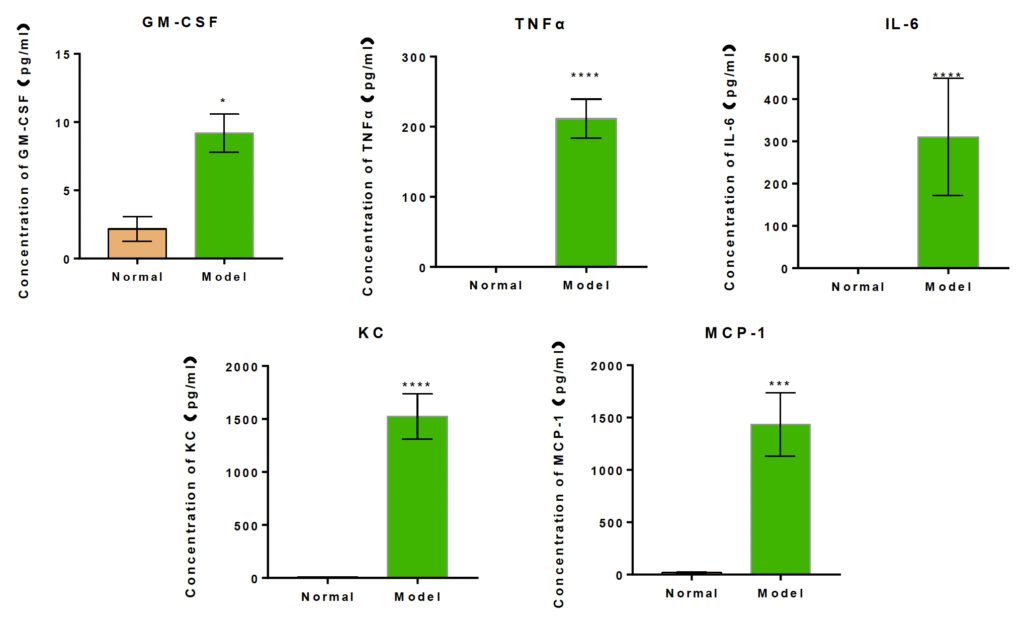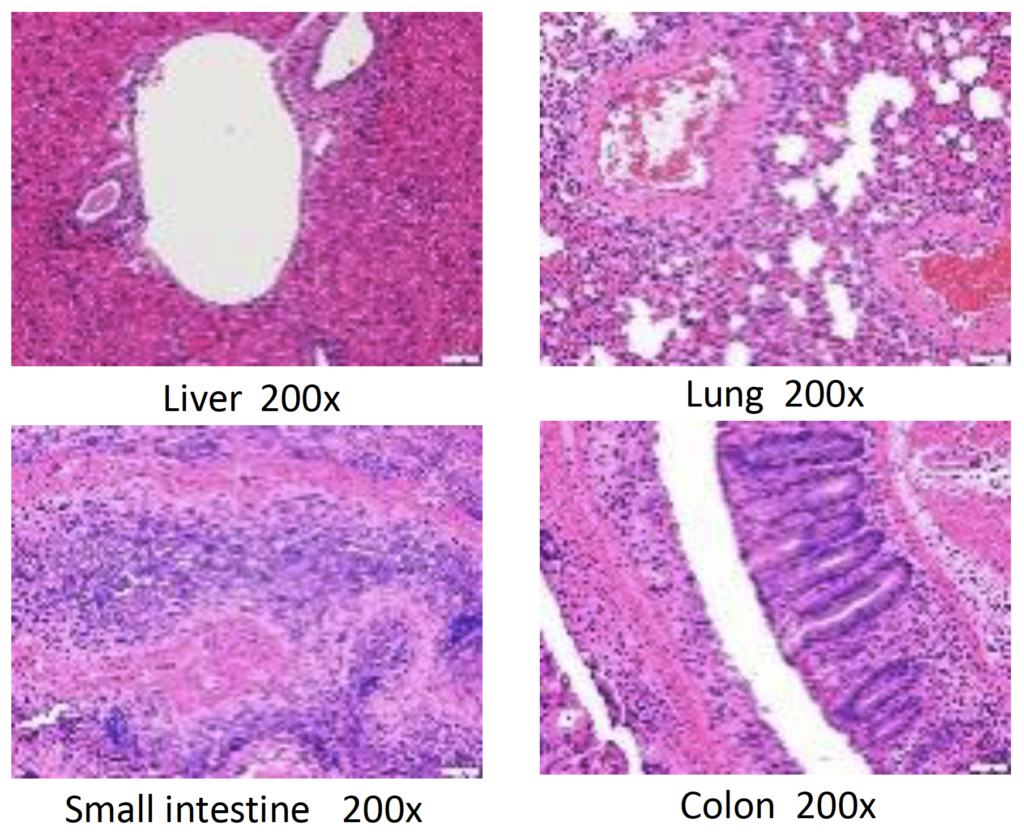Validation of GVHD in mouse model for preclinical efficacy screen
AACR Annual meeting 2021
Na Xu, Ya Zhang, Rou Xie, Lijun Jia, Yingying Cai, Qing Lin Oncology and Immunology Unit, WuXi AppTec, 288 Fute Zhong Road, Waigaoqiao Free Trade Zone, Shanghai 200131, China
Background
Bone marrow transplantation has been successfully and widely used to treat diseases such as leukemia and lymphomas. However, the complication Graft vs Host Disease (GVHD) is a serious hindrance in patients’ outcome. Immunosuppressant such as Cyclosporine A has been used to decrease the GVHD occurrence, but the associated side-effect such as transplant rejection and opportunistic infection outweigh its benefit. Therefore, new medication to suppress GVHD without severe toxicity is urgently in need now.
To build better preclinical platform for drug efficacy evaluation in GVHD, we have validated the GVHD model in both mouse host and humanized mouse host. In both models, we observed the typical clinical symptoms such as hollow back, inactiveness, body weight loss in transplanted mice. Humanized mice with transplantation started to die in 2 weeks. In the endpoint, we used FACS to analyze the cell population change in whole blood and spleen, and found histological changes in GI tract, liver and lung. Thus, this model is suitable to screen potential human-specific antibodies or new small molecules.
Methods
Allogeneic bone marrow transplant GvHD model (Mouse versus Mouse )
Receptor BALB/c (H-2b) mice were treated with antibiotic drinking water (Enrofloxacin) for 1 week to prevent infections after irradiation. BALB/c mice underwent total body irradiation (4Gy + 4Gy with 4h interval). 4h after the second irradiation, 10 million BM & 5 million splenocytes from C57BL/6J (H-2d) mice in 200 ul PBS was injected to a BALB/c mouse intravenously to induce GVHD.
Readouts: Body weight, survival and GvHD score.
Clinical severity of GvHD was quantified by scoring system .The scores of each term were summed, resulting in a GvHD score ranging from 0 to 12.
PBMC transplant GvHD model (Human versus Human ) Receptor humanized NPI mice (NOD-Prkdcscid-Il2rgem1lDMO with CD34+ hematopoeitc stem cells (HSCs) reconstitution) were injected with PBMCs from MHCII mismatched donors to trigger GVHD occurrence.
Results
In the human PBMC graft – induced GvHD model, injection of 3×10^7 PBMC induced body weight loss and high mortality rate.

Figure 1 Body weight and survival rate in human PBMC graft induced GvHD Model
Following transplant with BM and splenocyte (at 2:1 rate) , the mice rapidly lose weight and then partially recover by day 12-14, after which they develop a progressively worsening disease characterized by weight loss and increasing GvHD score.
In allogeneic bone marrow transplant GvHD model, cytokine and chemokine were increased in plasma.

Figure 3 GM-CSF, TNF-a, IL-6, KC and MCP-1 level in plasma of allogeneic bone marrow transplant GvHD model.
In allogeneic bone marrow transplant GvHD model, inflammatory cell could be observed around the vessels in liver tissue and lung tissue. The in small intestine sample, inflammatory cell, obvious mucosal erosion and fibrosis could be observed. Inflammatory lesion could also be observed in colons.

Figure 4 Representative pictures of H&E staining in livers, lungs, small intestines and colons of allogeneic bone marrow transplant GvHD model.
In allogeneic bone marrow transplant GvHD model, donor CD8+ cells comprise the dominant T cell population in the spleen at Day 14.

Figure 5 Percentage of CD3+CD4+ cell and CD3+CD8+ cell were detected in the splenocyte of allogeneic bone marrow transplant-induced GvHD model.
In allogeneic bone transplant GvHD model, donor CD8+ cells comprise the dominant T cell population in the blood

Figure 6 Percentage of CD3+CD4+ cell and CD3+CD8+ cell were detected in the whole blood of allogeneic bone marrow transplant-induced GvHD model.
Summary
- Humanized mice with HMCII mismatched-PBMC transplantation (3×10^7) start to die in 2 weeks with significant body weight loss.
- Allogeneic transplantation with BM and splenocyte (at 2:1 rate) in lethally irradiated (4Gy + 4Gy) induced GvHD with inflammation in tissues and increased inflammatory cytokine and chemokine in plasma. CD8 comprised the dominant T cell population in both spleen and blood.
Reference
Frances Hakim, Daniel H, et al. Animal Models of Acute and Chronic Graft-Versus-Host Disease. Current protocol in Immunology, 2002 Grégory Ehx, Joan Somja, et al. Xenogeneic Graft-VersusHost Disease in Humanized NSG and NSG-HLA-A2/HHD Mice. Front Immunol, 2018
Related Content
STAT proteins are key mediators of cellular immunity, proliferation, apoptosis, and differentiation. STATs are known to play a role in...
VIEW RESOURCEAt the Covalent Drug Discovery 2023 Summit and Fragments 2024 Conference, we presented a case study on Bruton’s tyrosine kinase (BTK)...
VIEW RESOURCE
